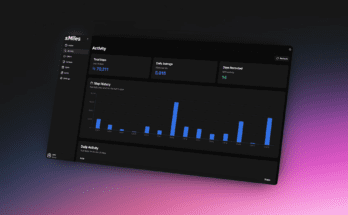In a technology-driven age, managing IT infrastructure effectively is critical for businesses aiming to stay competitive. As companies look for ways to reduce operational costs, improve efficiency, and enhance their digital capabilities, proactive IT services are becoming a key differentiator. When businesses invest in these services, they can focus more on growth and innovation rather than troubleshooting issues.
Reducing IT costs is often a top priority, especially as businesses balance budget constraints with the need for a robust digital environment. Proactive IT services not only help control costs but also minimize downtime, improve productivity, and enhance data security. In this post, we’ll look at how proactive IT services can support businesses in meeting these goals.
What Are Proactive IT Services?
Proactive IT services refer to an approach where IT support teams anticipate and resolve issues before they impact business operations. Unlike reactive services that address problems as they arise, proactive IT management involves continuous monitoring, regular maintenance, and strategic planning to prevent issues from occurring.
Key Benefits of Proactive IT Services
1. Cost Control and Budget Predictability
One of the most significant advantages of proactive IT services is cost control. When companies handle IT issues as they arise, unexpected expenses can add up quickly, making it challenging to predict monthly or annual IT costs. With proactive IT management, businesses can reduce unexpected costs related to system failures or data breaches.
- Regular Maintenance: Regular software updates, hardware checks, and data backups help minimize risks, reducing the likelihood of costly repairs and replacements.
- Predictable Budgeting: With proactive monitoring, companies can anticipate expenses more accurately, ensuring predictable budgets.
2. Reduced Downtime
Downtime can be incredibly costly for businesses, leading to lost revenue, decreased productivity, and even reputational damage. Proactive IT services address potential issues before they cause system failures, minimizing the risk of unplanned downtime.
- 24/7 Monitoring: IT providers often offer continuous monitoring, detecting issues like server overloads or hardware malfunctions before they escalate.
- Scheduled Maintenance: Proactive IT teams can schedule necessary updates and maintenance during off-peak hours, ensuring minimal disruption.
3. Enhanced Data Security
Data security is paramount, particularly with increasing cyber threats targeting businesses of all sizes. Proactive IT services incorporate comprehensive security measures that protect sensitive data and prevent breaches.
- Regular Security Audits: Proactive IT services often include regular audits, ensuring that networks and systems meet current security standards.
- Advanced Threat Detection: Real-time monitoring allows IT teams to detect potential threats, such as unusual login attempts, before they result in data breaches.
4. Increased Productivity
With fewer IT issues to worry about, employees can focus on their primary tasks without interruption. A smoothly operating IT environment supports greater productivity across the organization.
- Automated Processes: Proactive IT can automate repetitive tasks, freeing up employees to focus on strategic goals.
- Reliable Systems: Consistent performance from IT systems reduces the time employees spend waiting for solutions to technical problems.
5. Improved Customer Satisfaction
Customer experience is becoming a vital part of business success, and downtime or slow systems can harm client interactions. By keeping systems efficient and secure, proactive IT services contribute to a positive customer experience.
- Fast Response Times: Reliable IT systems ensure that customer queries and transactions are handled quickly.
- Data Integrity: A secure and stable IT infrastructure prevents issues that might compromise customer information.
Components of an Effective Proactive IT Service
To fully reap the benefits, a proactive IT strategy should include key components that ensure a business can handle its technology needs efficiently. Here are some essential components that proactive IT services often provide.
1. Monitoring and Alert Systems
Monitoring tools are critical in a proactive IT environment. These systems continuously scan networks, applications, and devices to identify potential problems.
- Real-Time Alerts: Automated alerts notify IT teams of unusual activity or potential issues before they impact the business.
- Analytics and Reporting: Regular reports help track system health over time, providing insights for further optimization.
2. Routine Updates and Patches
Software updates and patches are often overlooked but play a significant role in protecting business systems. By staying up-to-date, businesses can avoid security vulnerabilities and ensure software runs smoothly.
- Scheduled Updates: Regularly scheduled updates keep systems current with the latest security and performance enhancements.
- Automated Patch Management: Many proactive IT providers automate patches, ensuring critical updates are applied without disrupting daily operations.
3. Data Backups and Disaster Recovery
Proactive IT services prioritize data integrity and ensure that backups are frequent and reliable. In the event of a system failure, businesses can quickly recover data and continue operations.
- Automated Backups: Regular backups ensure that data is preserved, reducing the risk of data loss.
- Disaster Recovery Plans: Effective IT services create a plan for how to recover data and resume operations in the event of a crisis.
4. Cybersecurity Measures
With cyber threats on the rise, businesses need proactive defenses to safeguard their systems. Proactive IT services implement multi-layered security measures to protect against unauthorized access.
- Firewall and Antivirus: Firewalls and antivirus software act as the first line of defense, blocking malicious traffic and software.
- Employee Training: Many providers offer cybersecurity training for employees, which is a crucial step in preventing phishing and other cyber attacks.
How to Choose a Proactive IT Service Provider
Selecting the right proactive IT provider can be a crucial decision for any business. Here are some factors to consider:
1. Range of Services
Different businesses have unique needs, so it’s essential to choose a provider that offers a range of services tailored to your industry and size. This might include specific support for cloud services, cybersecurity, or compliance management.
2. Response Time and Support
Reliable IT providers offer quick response times and are available 24/7. Fast, effective support can make a significant difference when dealing with critical issues.
3. Reputation and Reviews
Look for providers with a strong reputation and positive customer reviews. A proven track record is often a good indicator of reliable service.
4. Pricing and Flexibility
Make sure the provider’s pricing structure aligns with your budget. Some providers offer flexible payment options, which can make proactive IT services more accessible to businesses of varying sizes.
The Future of Proactive IT Services
As technology evolves, so too will proactive IT services. With advancements in artificial intelligence and machine learning, IT providers can offer even more precise monitoring and issue resolution. Businesses that invest in proactive IT today will likely see long-term benefits, including reduced costs, improved security, and increased productivity.
In summary, proactive IT services provide businesses with a strategic advantage by offering predictable costs, minimizing downtime, enhancing security, and supporting growth. By choosing a proactive approach, companies can focus on innovation and customer satisfaction while ensuring their technology infrastructure remains resilient and secure.



